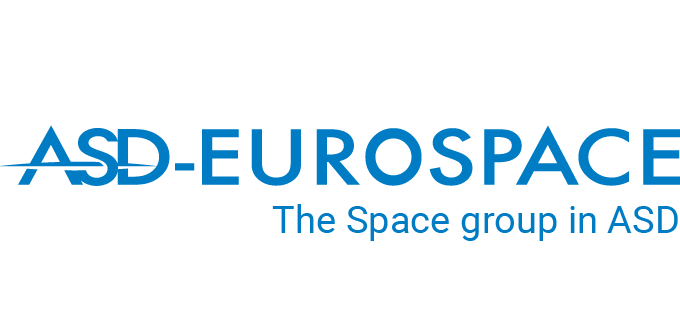
Eurospace Facts & Figures
Eurospace announces the release of the 27th edition of the annual facts & figures report.
IMPORTANT WARNING: we issued a PDF with a few print typos (numbers in the text not matching the values in charts/tables), in particular at pages 29 and 44. We are resending a corrected PDF file to all recipients. Ensure that your copy bears the mention “27th Edition revision 1” on the cover (and the page footers). If not, please reach out to us for a resend.

About the survey
Every year, Eurospace, the association of the European space manufacturing industry, issues the annual update of its facts & figures statistical series.
Since its inception, the statistical collection aims at measuring the value of the market for space systems design, development and production in Europe (i.e. the space industry manufacturing activity). Space systems are defined in detail (see “products definitions”) in order to ensure an appropriate data collection and to avoid misinterpretation of the data sets.
This statistical effort is supported by two main driving principles:
- The focus on manufacturing activities (with the exclusion of all services related to the exploitation of space systems: launch services and satellite operations). Service activities associated to the manufacturing process of space systems (such as engineering and test services, consultancies etc.) are included in the perimeter of the survey. A share of ground systems operations is also included, when they are performed for Space agencies in Europe.
- The effort to measure the value of the end-market, with the elimination of all inter-sectoral business that could be counted twice or more.
Perimeter of the survey
The Eurospace facts & figures survey focuses on measuring the economic value of industrial activities associated to the design, development and manufacturing of space systems (also called the upstream sector) in Europe.
It does not consider non-space products (such as missiles or consumer-end terminals such as GPS receivers, Satellite TV receivers and dishes, etc.) nor the provision of services based on the exploitation of space assets. This means that the revenues and employment of such companies as Eutelsat, Paradigm, Inmarsat, Arianespace, SES Global, and other operators are not included in the perimeter of the survey.
Data Collection
The data collection is supported by companies with space activities operating in Europe (not limited to Eurospace membership). Companies answer a questionnaire providing detailed information on their sales and employment relevant to space systems design, development and manufacturing. All information released to Eurospace is protected by a confidentiality agreement. The quality of the survey is only as good as the data provided by participating companies.
Most companies in the space manufacturing sector have participated at least once to the Eurospace survey in the past. The main players (companies with more than 100 space employees) usually support the survey on a very regular basis, while smaller players may only sporadically support the survey . When a reply is missing from a company, it is supplemented by an estimate based on a previous reply received from that company, and/or publicly available information on the company.
The space manufacturing sector in Europe is at the same time very fragmented and very concentrated. The 30 largest space units in Europe make for almost 80% of total employment of the sector. The remaining smaller players representing barely 20% of employment. It is also interesting to note that all smaller players work almost exclusively as subcontractors to the largest players.
From a statistical point of view, this means that an efficient data collection shall focus on collecting at least the main replies (the large players, and particularly the prime contractors) that will provide a good assessment of final sales. Collecting additional replies from increasingly smaller players, adds a layer of detail to the survey and improves marginally the measurement of employment; but it does not affect the overall value of final sales and has a limited economic impact.
Survey representativeness
The survey rate of return, measured in number of units was 45%. Globally, the 216 updated data points represent 85% of final sales data compiled and 73% of space employment.

Survey 2023 – main results and key trends
The latest f&f report is only available to companies having supported the survey and to European institutions. Contact pierre.lionnet(@)eurospace.org to check whether you are eligible for a free PDF copy.
All others can download:
- The f&f press release press-release-ff-2023-final-release-v2
- see also the video presentation on Eurospace youtube channel
- The 2022 f&f report Facts & Figures Report 2022 – WEB RELEASE
Note that all elements of the Eurospace Facts and Figures publication, including, data, charts and reports are provided for information purposes to the general public via .www.eurospace.org. All rights to use, repost or reproduce any excerpt of text, tables and charts are reserved by Eurospace. View our copyright policy here.
Key data and information
- In 2022, the European space sector successfully delivered 96 spacecraft to the launch pad, of which 13 large satellites and 83 small satellites. It also delivered 5 launchers for operations in Kourou.
- In 2022, the European space industry posted sales worth 8257 Million € and employed a total of 57510 workers (FTE: Full Time Equivalents).

Definitions
- Direct industry employment: personnel employed directly by the company (permanent staff, measured in FTE).
- Other personnel working on site: personnel directly supporting company activities supplied by a third party (interim workers, engineering, etc. measured in FTE).
- Final sales: sector sales to final customers (equal to consolidated sales).

Markets segments
The European space industry has access to quite large, yet fragmented, domestic markets, its core markets. It also exports its systems outside Europe. In both markets, space systems are sold to a variety of customers; mostly public entities such as space agencies in Europe and worldwide, but also private customers such as satellite or launch service operators.

